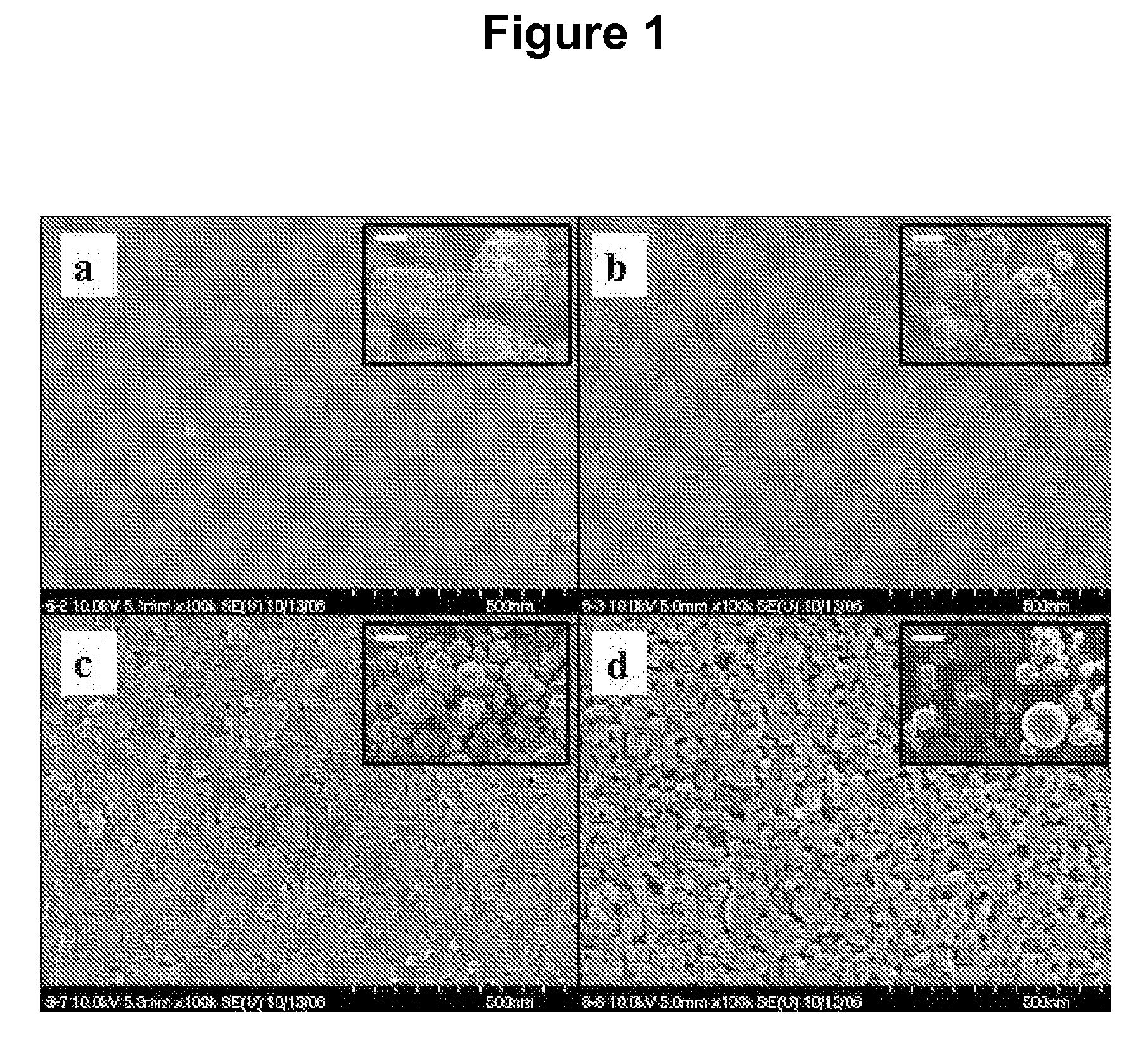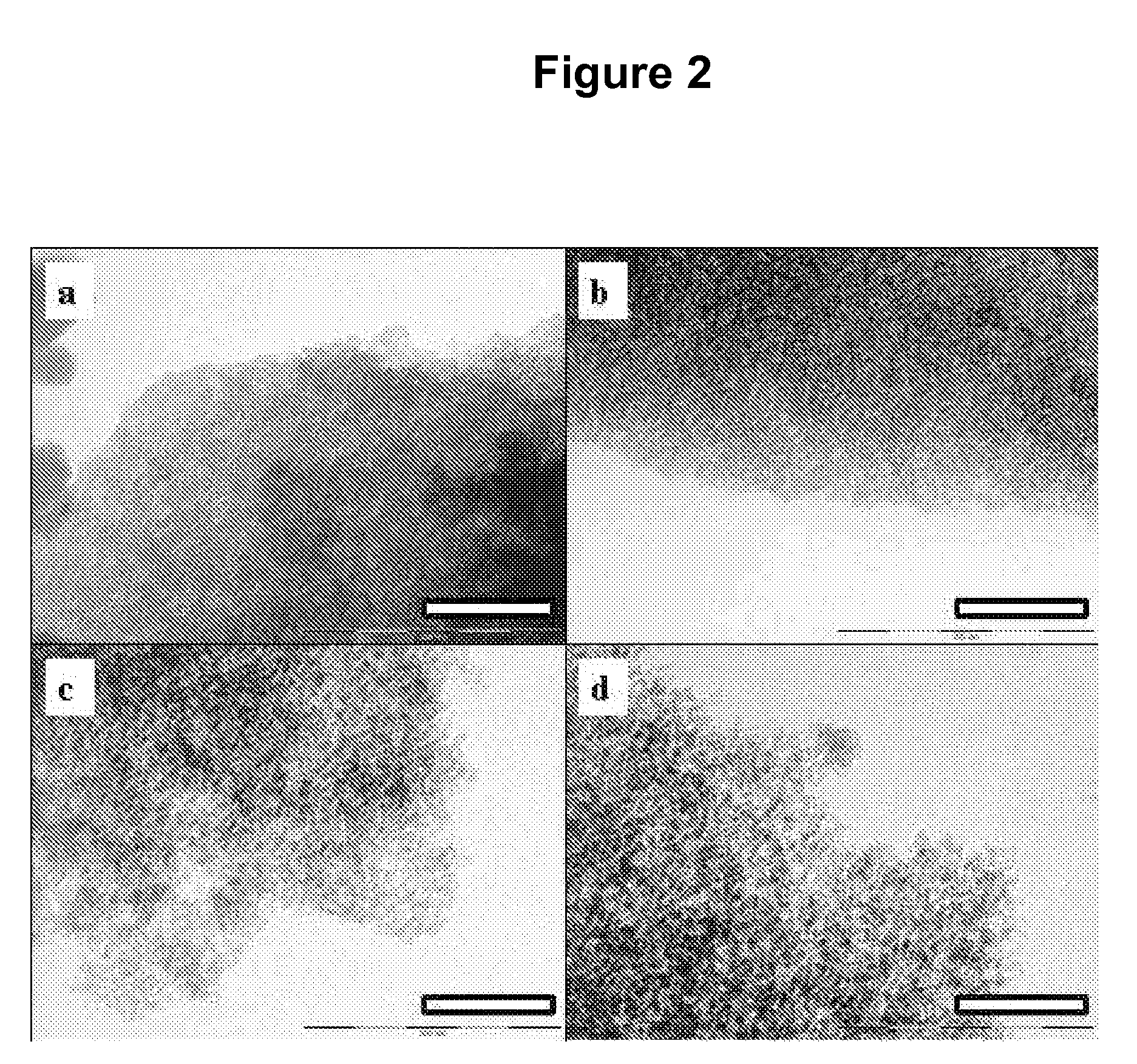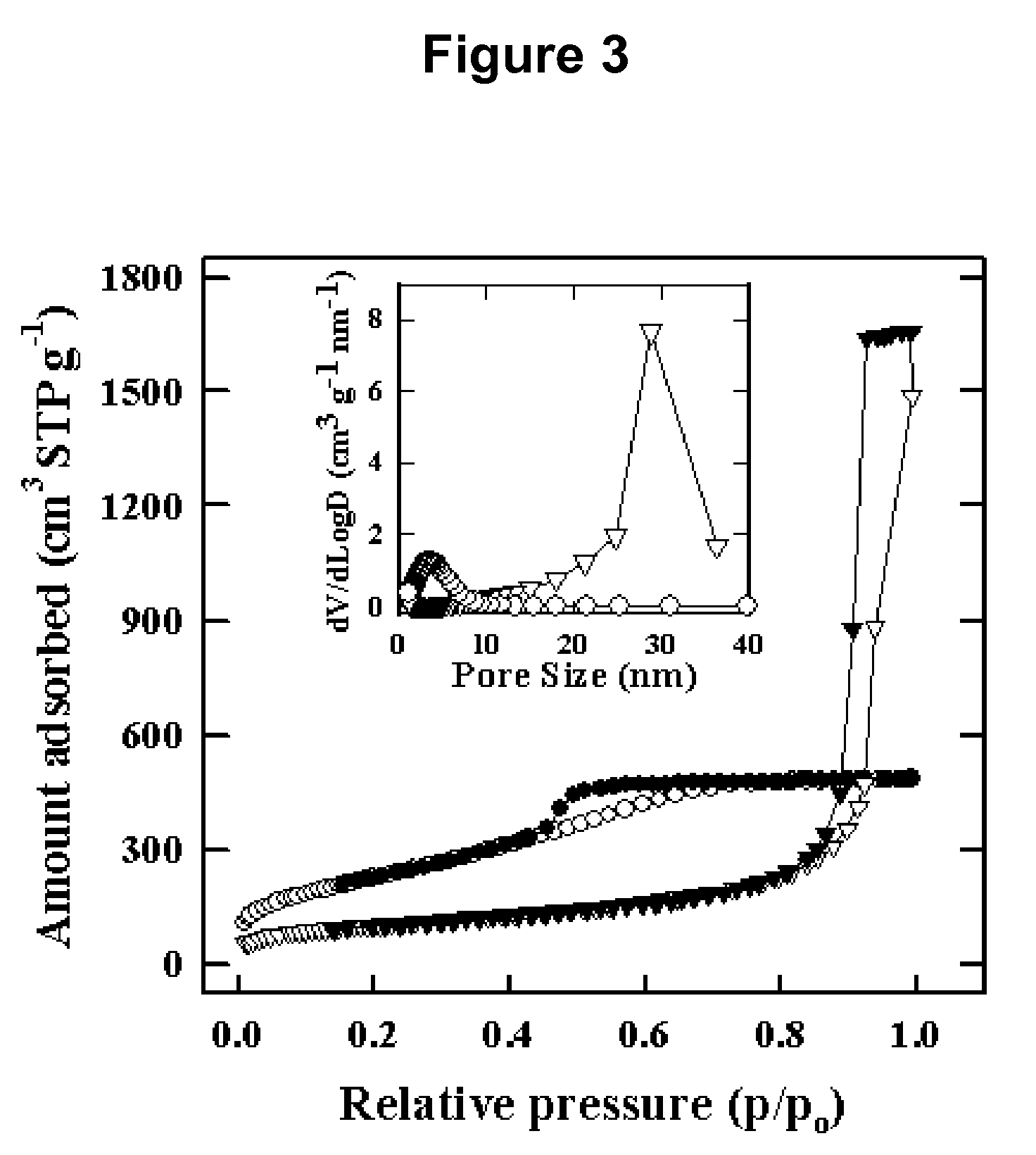Mesoporous silica particles and preparation method thereof
a technology of mesopores and silica, which is applied in the field of mesopores of silica particles, can solve the problems of difficult preparation of silica having mesopores larger than 10 nm using an organic template, many problems, and almost impossible to synthesize mesopores of 10 m or more, etc., and achieves increased pore size, high pore volume, and large surface area
- Summary
- Abstract
- Description
- Claims
- Application Information
AI Technical Summary
Benefits of technology
Problems solved by technology
Method used
Image
Examples
example 1
Preparation of Mesoporous Silica Particles
[0049]1 mol of tetraethyl orthosilicate as a silica precursor, 0.34 mol of n-dodecylamine as an alkylamine-based surfactant, 0.06 mol of di-(2-ethylhexyl)phosphoric acid as a phosphoric acid-based cosurfactant, 38 mol of water, and 0.9 mol of ethanol were loaded into a reactor, and were then stirred for 10˜30 min. Further, in a separate reactor, 4.8×10−3 mol of hydrochloric acid solution was prepared. The hydrochloric acid solution was added with the above prepared reaction mixture while stirring it, after which the obtained reaction mixture was allowed to react for 1˜24 hours. Thereafter, the synthesized mesoporous silica particles were filtered using filter paper, washed with ethanol, and dried in a drying oven. The dried mesoporous silica particles were burned at 550° C. for 7 hours using a tubular electric furnace in the air to thus remove the surfactant, thereby preparing mesoporous silica particles according to the present invention.
Ex...
examples [UNK]
Examples 11˜20
[0051]Mesoporous silica particles were prepared in the same manner as in Examples 1˜10, with the exception that the synthesized mesoporous silica particles were further subjected to a hydrothermal reaction in an oven at 100° C. for 24 hours using a closed high temperature / high pressure reactor.
Comparative Examples 1˜6
[0052]Mesoporous silica particles were prepared in the same manner as in Example 1, with the exception that the phosphoric acid-based cosurfactant was not added, and the molar ratios of tetraethyl orthosilicate, n-dodecylamine, water, ethanol, and hydrochloric acid were changed as shown in Table 2 below.
TABLE 2Molar Composition of Reaction MaterialsTetraethyln-HydrochloricorthosilicateDodecylamineWaterEthanolacidC. Ex. 110.34380.9—C. Ex. 210.34380.91.2 × 10−3C. Ex. 310.34380.92.4 × 10−3C. Ex. 410.34380.93.6 × 10−3C. Ex. 510.34380.94.8 × 10−3C. Ex. 610.34380.919.0 × 10−3
experimental example 1
Structural Properties of Mesoporous Silica Particles
[0054]In order to evaluate the structural properties of the mesoporous silica particles prepared with the addition of the alkylamine-based surfactant and the phosphoric acid-based cosurfactant according to the present invention and the mesoporous silica particles prepared without the addition of the phosphoric acid-based cosurfactant, the mesoporous silica particles prepared in Examples 8˜10 and Comparative Examples 2˜3, as typical examples, were measured for surface area, total pore volume, and pore size thereof. The results are shown in Table 3 below.
TABLE 3Total PoreSurface Area (m2 / g)Volume (cm3 / g)Pore Size (nm)Ex. 86700.763.5Ex. 99080.853.2Ex. 108240.583.5C. Ex. 29930.762.5C. Ex. 31,0140.852.6
[0055]As is apparent from Table 3, when the phosphoric acid-based cosurfactant was added, the pore size was seen to increase to be greater than when the phosphoric acid-based cosurfactant was not added.
PUM
| Property | Measurement | Unit |
|---|---|---|
| Temperature | aaaaa | aaaaa |
| Temperature | aaaaa | aaaaa |
| Time | aaaaa | aaaaa |
Abstract
Description
Claims
Application Information
 Login to View More
Login to View More - R&D
- Intellectual Property
- Life Sciences
- Materials
- Tech Scout
- Unparalleled Data Quality
- Higher Quality Content
- 60% Fewer Hallucinations
Browse by: Latest US Patents, China's latest patents, Technical Efficacy Thesaurus, Application Domain, Technology Topic, Popular Technical Reports.
© 2025 PatSnap. All rights reserved.Legal|Privacy policy|Modern Slavery Act Transparency Statement|Sitemap|About US| Contact US: help@patsnap.com



